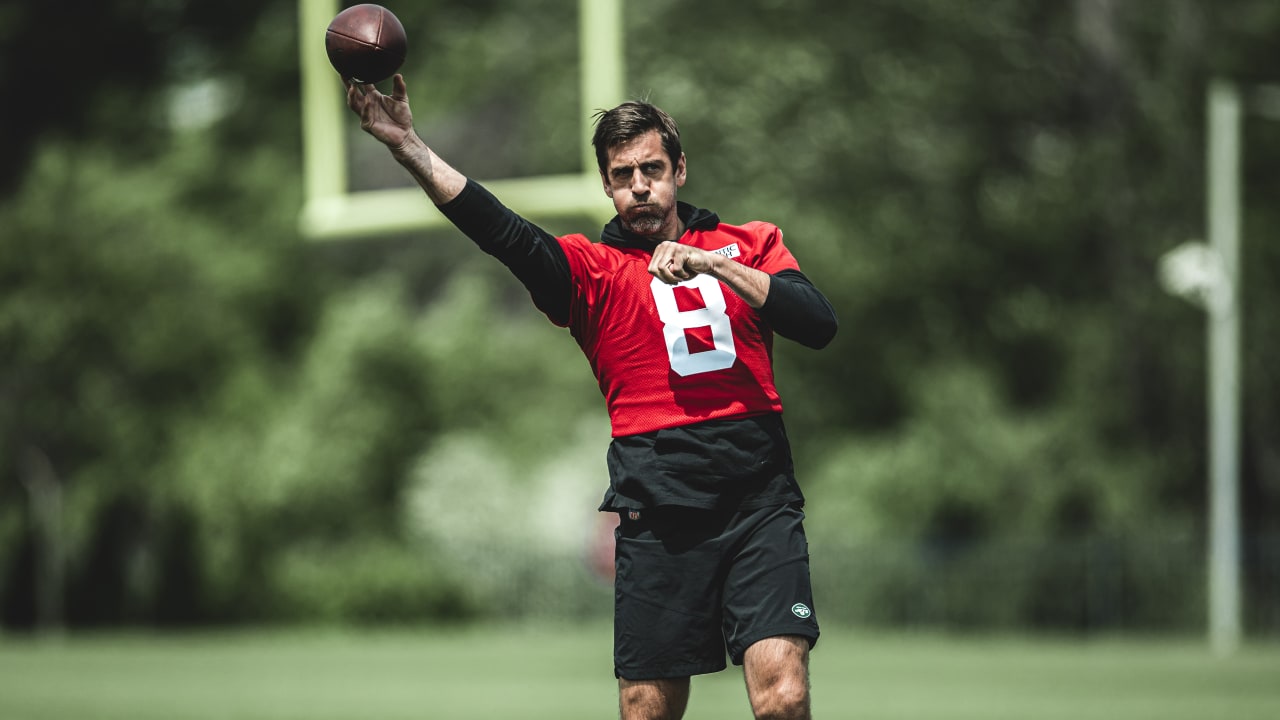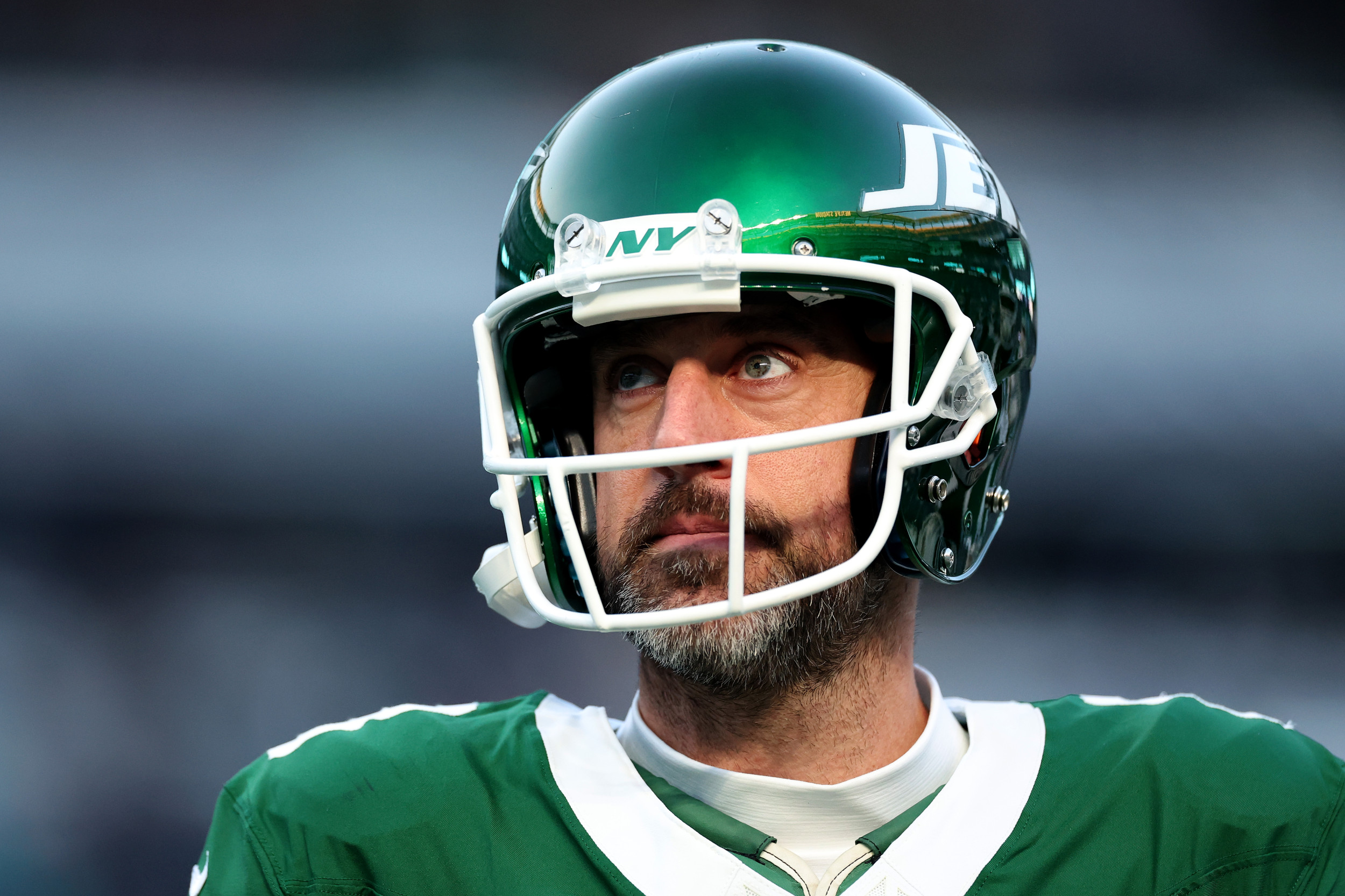Aaron Rodgers' Calf: Unpacking The Impact On A Legendary Career
The name Aaron evokes many images – from the reliable furniture and electronics found at Aaron's, known for affordable payments and helping decorate homes with a new look, to figures of historical and even biblical significance. The name itself carries a certain weight, often associated with leadership or foundational roles. But in the electrifying world of American football, one Aaron stands above the rest: Aaron Rodgers. His career has been defined by incredible precision, unparalleled arm talent, and a relentless pursuit of excellence. Yet, even for an athlete of his caliber, the physical toll of the game is undeniable, and few things can derail a season or a career quite like an injury, especially when it involves something as crucial as the Aaron Rodgers calf.
This article will delve into the intricacies of calf injuries in professional sports, specifically focusing on how such an ailment has impacted, or could impact, the illustrious journey of Aaron Rodgers. We'll explore the biomechanics, the recovery process, and the broader implications for a quarterback whose mobility and throwing mechanics are intrinsically linked to his lower body health. Understanding the severity and management of a calf issue for a player of his stature offers a fascinating look into the high-stakes world of elite professional athletics.
Table of Contents
- Who is Aaron Rodgers? A Brief Biography
- The Anatomy of a Calf Injury and its Sporting Significance
- Aaron Rodgers and His History with Lower Body Ailments
- The Strategic Implications for the Team
- Expert Perspectives: Medical and Sports Analysts Weigh In
- Beyond the Field: The Business and Fan Impact
- The Road Ahead: What a Healthy Aaron Rodgers Calf Means for His Legacy
Who is Aaron Rodgers? A Brief Biography
Aaron Charles Rodgers, born on December 2, 1983, in Chico, California, has carved out one of the most remarkable careers in National Football League (NFL) history. His journey to stardom was not without its detours. Despite a stellar high school career, he was largely overlooked by major college programs, leading him to play at Butte Community College before transferring to the University of California, Berkeley. It was there that his exceptional talent truly began to shine, culminating in a standout junior season that propelled him into the NFL Draft conversation.
Drafted 24th overall by the Green Bay Packers in 2005, Rodgers spent his initial years as the understudy to legendary quarterback Brett Favre. This period of learning and development proved invaluable. When he finally took the reins as the Packers' starting quarterback in 2008, he quickly established himself as an elite passer, known for his incredible accuracy, powerful arm, and uncanny ability to extend plays with his mobility. Over his illustrious tenure with the Packers, Rodgers led the team to a Super Bowl XLV victory in 2011, earning Super Bowl MVP honors. He also secured four NFL Most Valuable Player (MVP) awards (2011, 2014, 2020, 2021), cementing his status as one of the greatest quarterbacks of all time. His ability to consistently perform at an MVP level, often elevating the play of those around him, is a testament to his unique skill set and dedication to the game. In a significant career shift, Rodgers was traded to the New York Jets in 2023, embarking on a new chapter that promised renewed excitement and a fresh challenge for the veteran signal-caller.
Personal Data & Biodata: Aaron Rodgers
| Category | Detail |
|---|---|
| Full Name | Aaron Charles Rodgers |
| Date of Birth | December 2, 1983 |
| Place of Birth | Chico, California, USA |
| Height | 6 ft 2 in (1.88 m) |
| Weight | 225 lb (102 kg) |
| Position | Quarterback |
| NFL Draft | 2005, Round 1, Pick 24 (Green Bay Packers) |
| College | University of California, Berkeley |
| NFL Teams | Green Bay Packers (2005-2022), New York Jets (2023-present) |
| Super Bowl Wins | XLV (MVP) |
| NFL MVP Awards | 4 (2011, 2014, 2020, 2021) |
The Anatomy of a Calf Injury and its Sporting Significance
The calf muscle group, located at the back of the lower leg, is a powerhouse for athletic movement. It primarily consists of two major muscles: the gastrocnemius and the soleus. The gastrocnemius is the larger, more superficial muscle, giving the calf its visible shape, while the soleus lies deeper and is crucial for sustained contractions. Both muscles converge to form the Achilles tendon, which connects to the heel bone. These muscles are vital for plantarflexion (pointing the toes downwards), which is essential for walking, running, jumping, and pushing off the ground.
Calf injuries, often referred to as "strains," occur when these muscle fibers are overstretched or torn. They are typically graded based on severity:
- Grade 1 (Mild): A few muscle fibers are stretched or torn. There might be some pain and tenderness, but strength and mobility are largely preserved. Recovery usually takes 1-3 weeks.
- Grade 2 (Moderate): A significant number of muscle fibers are torn, leading to more pain, swelling, and a noticeable loss of strength and range of motion. Recovery can range from 3-6 weeks, sometimes longer.
- Grade 3 (Severe): A complete rupture of the muscle. This is characterized by intense pain, significant swelling, bruising, and a complete inability to use the affected muscle. Surgical intervention may be required, and recovery can take 3-6 months or even longer.
For an athlete, particularly a quarterback like Aaron Rodgers, a healthy calf is non-negotiable. Quarterbacks rely heavily on their lower body for generating power in their throws, maintaining balance in the pocket, and executing quick movements to evade pressure. A strong, stable base is fundamental to their throwing mechanics; a compromised calf can lead to a domino effect, impacting everything from accuracy and velocity to their ability to step into throws or scramble effectively. The push-off from the back leg, the rotation through the hips, and the follow-through are all directly affected by the health of the calf muscles. This makes any issue with the Aaron Rodgers calf a major point of concern for his performance and the team's success.
Aaron Rodgers and His History with Lower Body Ailments
While Aaron Rodgers is renowned for his durability and ability to play through pain, he is not immune to the wear and tear of professional football. Like many athletes, he has had his share of bumps and bruises, and lower body issues, including calf and hamstring tightness, have occasionally surfaced throughout his career. These aren't always season-ending injuries, but even minor strains can significantly impact a quarterback's finely tuned mechanics. For instance, in 2014, Rodgers famously dealt with a significant calf strain late in the season, which limited his mobility in crucial playoff games. Despite the discomfort, he showcased incredible resilience, even throwing for 317 yards and a touchdown in the NFC Championship game against Seattle while clearly hampered.
The nature of his position, which involves explosive bursts, sudden changes in direction, and constant torque on the lower body during throwing motions, makes the calf muscles particularly vulnerable. Factors such as age, accumulated mileage on the body, and the intensity of training and game-day demands can all contribute to the likelihood of such injuries. Even during the off-season, an athlete's activities are scrutinized for their impact on physical readiness. It's interesting to note that Aaron Rodgers had some fun in the sun this weekend in Southern California — sans his mysterious other half, highlighting the balance between intense training and necessary recovery or leisure. However, any calf issue for Rodgers, whether a nagging tightness or a more severe strain, immediately becomes a topic of intense discussion, given its potential to disrupt his elite-level play.
The Immediate Impact on Performance
When a quarterback like Aaron Rodgers experiences a calf injury, the immediate repercussions on his on-field performance are profound and multifaceted. Firstly, his signature mobility, a key component of his elusive playmaking style, is severely compromised. The ability to step up in the pocket, roll out, or scramble for crucial yards becomes limited, forcing him to rely more on quick throws or designed plays. This reduction in mobility can make him a more stationary target for pass rushers, increasing his vulnerability to sacks and hits.
Secondly, and perhaps more critically, throwing mechanics are directly affected. The calf muscles are integral to generating rotational power and providing a stable base for the throwing motion. A strained calf can disrupt the kinetic chain, leading to a loss of velocity, accuracy, and overall arm strength. Quarterbacks might compensate by altering their mechanics, which can lead to further issues in other parts of the body or simply result in less effective passes. The pain itself can be a constant distraction, making it difficult to focus on reads and execute plays with the precision Rodgers is known for. Even a slight hesitation due to discomfort can be the difference between a completion and an interception in the fast-paced NFL.
Long-Term Recovery and Rehabilitation Protocols
The rehabilitation process for a calf injury is meticulous and requires patience, especially for an athlete whose career depends on peak physical condition. The initial phase focuses on R.I.C.E. (Rest, Ice, Compression, Elevation) to reduce swelling and pain. Once acute symptoms subside, physical therapy begins, emphasizing gentle stretching and range-of-motion exercises to prevent stiffness and promote healing of the muscle fibers.
As healing progresses, strengthening exercises are introduced, gradually increasing in intensity. These include calf raises, eccentric loading exercises, and functional movements that mimic on-field actions. Balance and proprioception training are also crucial to re-establish stability and coordination. For a professional athlete, the rehabilitation team – including doctors, physical therapists, and athletic trainers – works closely to ensure a safe and effective return to play. They utilize advanced techniques like dry needling, massage, and sometimes even platelet-rich plasma (PRP) injections to accelerate healing. The goal is not just to heal the injury but to strengthen the surrounding muscles and improve biomechanics to prevent recurrence. This comprehensive approach is vital for ensuring that the Aaron Rodgers calf is not just recovered, but robust enough to withstand the rigors of an NFL season.
The Strategic Implications for the Team
Beyond the individual impact on Aaron Rodgers, a calf injury to a starting quarterback of his caliber sends ripples throughout the entire team's strategic planning. Offensive coordinators must immediately adjust their play-calling to account for reduced mobility and potentially compromised throwing power. This might mean fewer rollouts, more quick passes, and a greater emphasis on the running game or short-to-intermediate routes that don't require deep throws or extensive pocket movement.
The offensive line's job becomes even more critical, as they must provide an impeccably clean pocket to protect a less mobile quarterback. The pressure on wide receivers and tight ends also increases, as they need to get open faster and create separation to give Rodgers easier targets. Furthermore, the backup quarterback situation comes into sharp focus. While teams always have a contingency plan, few backups can replicate the unique skill set and leadership of a future Hall of Famer like Rodgers. The team's overall offensive identity can shift dramatically, impacting rhythm, confidence, and ultimately, their ability to score points and win games. The entire coaching staff and roster must adapt quickly, highlighting the interconnectedness of professional football.
- Stout Ale House
- Bella S Hacienda Photos
- %D8%A7%D9%84%D9%84%D9%87%D9%85 %D8%A7%D8%B4%D9%81%D9%8A %D9%83%D9%84 %D9%85%D8%B1%D9%8A%D8%B6
- Dramalis Erome
- Angel Gostos

Lots of Little Details Remind Jets QB Aaron Rodgers 'I'm in the Right

Aaron Rodgers

پیشنهاد شنیدنی: Endless Song پایانی شیرین از AaRON